[ad_1]
Earth will fly between the sun and Saturn on September 8, 2024, placing the ringed planet opposite the sun – at opposition – in our sky. Saturn at opposition marks the middle of the best time of year to see the planet. Plus, in 2024, Saturn’s opposition also heralds a ring plane crossing – during which Saturn’s rings will appear edge-on from Earth – due in March 2025. Join the EarthSky team, and special guest Pranvera Hyseni, as we discuss Saturn’s opposition and ring plane crossing LIVE beginning at 12:15 p.m. CDT (17:15 UTC) on Monday, September 2. Click in for a “notify me” button.
Saturn at opposition
When and where to watch in 2024: Around its September 8 opposition, Saturn is rising in the east at sunset and is visible all night. Afterward, for the rest of 2024, Saturn will remain visible in the evening sky. It’ll finally disappear in the sunset glare in February 2025.
Date and time of opposition: 5 UTC on September 8, 2024 (12 a.m. CDT).
Brightness at opposition: At opposition, the ringed planet shines at its brightest for 2024 at magnitude 0.6.
Distance from Earth at opposition: Around opposition, Saturn is at its shortest distance from Earth for 2024, at 72 light-minutes (about 8.66 astronomical units).
Constellation at opposition: Aquarius the Water Bearer.
Disk size at opposition: Saturn’s disk size is largest around opposition. At its largest, Saturn will appear 19.2 arcseconds across.
Ring tilt at opposition: At opposition, Saturn’s rings are tilted by 3.3 degrees, relative to earthly viewers. That’s very narrow. Saturn’s rings are nearly edge-on from Earth. In March 2025, when we cross the plane of Saturn’s rings, they will temporarily seem to disappear!
Read more: Saturn’s rings are disappearing!

Around opposition is the best time to see Saturn
Opposition marks the middle of the best time of the year to see an outer planet. Even though you can’t see Saturn’s rings through binoculars, it’ll appear through binoculars as a bright oval-shaped disk. But any small backyard telescope will show the rings.
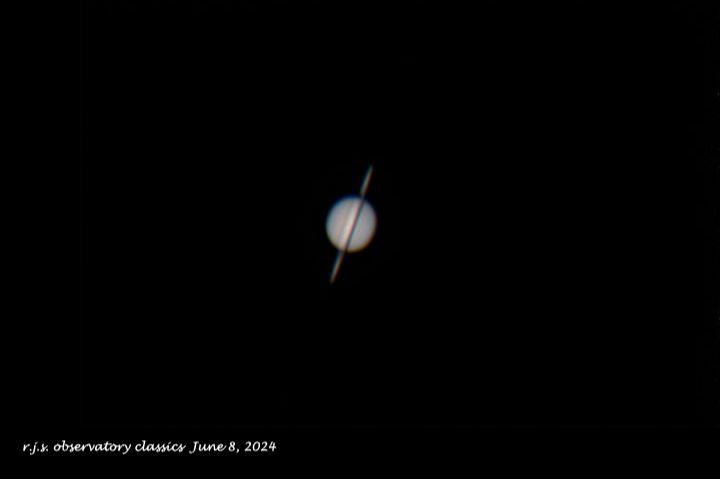

For precise sun and Saturn rising times at your location:
Old Farmer’s Almanac (U.S. and Canada)
timeanddate.com (worldwide).
Stellarium-Web (online planetarium program)

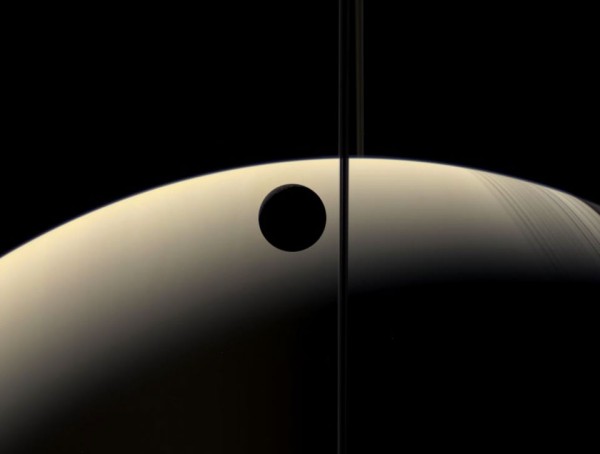
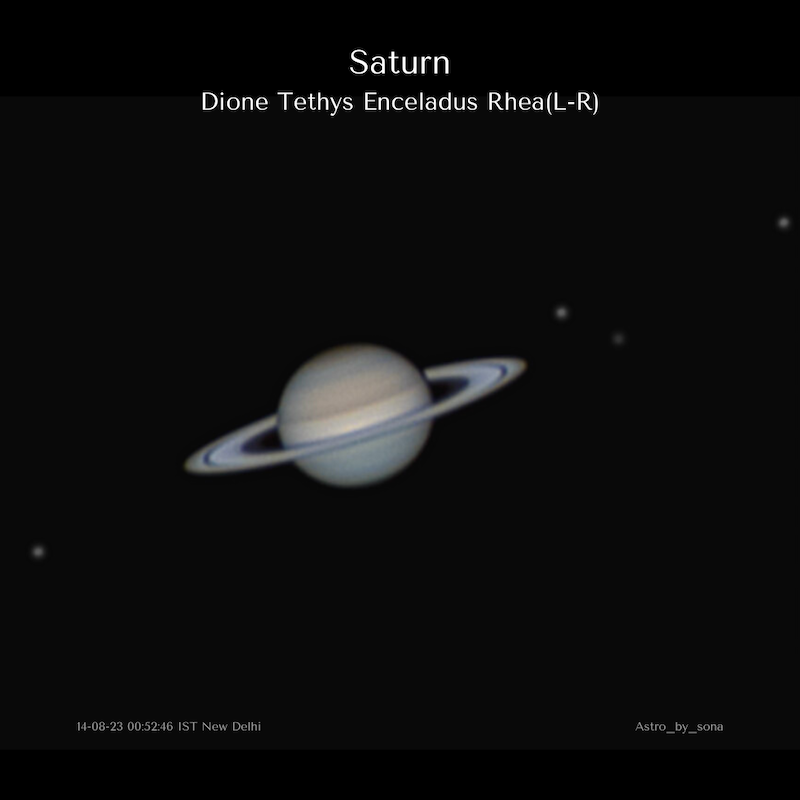
How often is Saturn at opposition?
As a matter of fact, Saturn comes to opposition nearly every earthly year. A year is the length of time Earth takes to travel once around the sun. But Saturn’s orbit around the sun takes 29.4 Earth years. So each year we have to travel slightly farther in orbit to catch up to, and pass, Saturn again. Thus Saturn oppositions are roughly 378 days apart and Saturn’s opposition comes about two weeks later each year.
2023 Saturn opposition: August 27
2024 Saturn opposition: September 8
2025 Saturn opposition: September 20
2026 Saturn opposition: October 4
View from above the solar system, September 2024
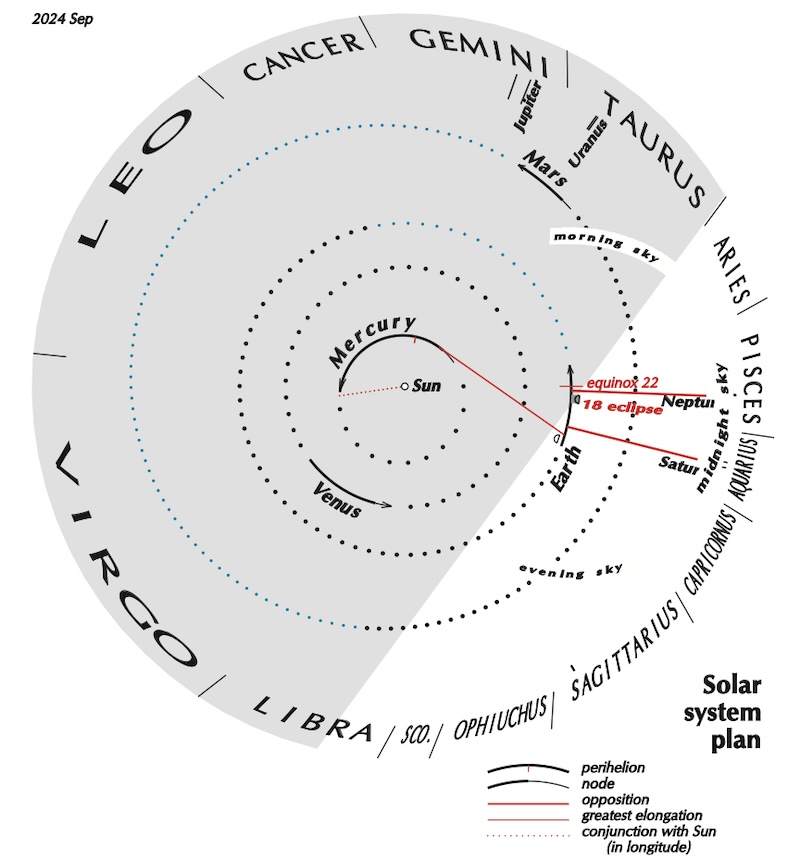
Saturn is a world of rings and moons
Saturn is the 6th planet outward from the sun. People in ancient times saw it as a golden “star” that moved among the fixed stars: a wanderer. That’s because, it wasn’t until astronomers began using telescopes in the 17th century when they saw its rings.
Then, in the 1950s, astronomers spoke of Saturn as having three rings. But spacecraft in the later part of the 20th century showed vastly more detail. In fact, they revealed that Saturn has thousands of thin, finely detailed rings made of tiny chunks of ice. Also, Saturn has at least 146 moons with confirmed orbits. Yet 83 of them don’t have names. Furthermore, only 13 of them have diameters larger than 30 miles (about 50 kilometers).
Certainly, Saturn is truly a wondrous world of rings and moons. Usually, it’s everyone’s favorite celestial object to gaze at through a small telescope. So if there’s a public astronomy night near you this month … go!
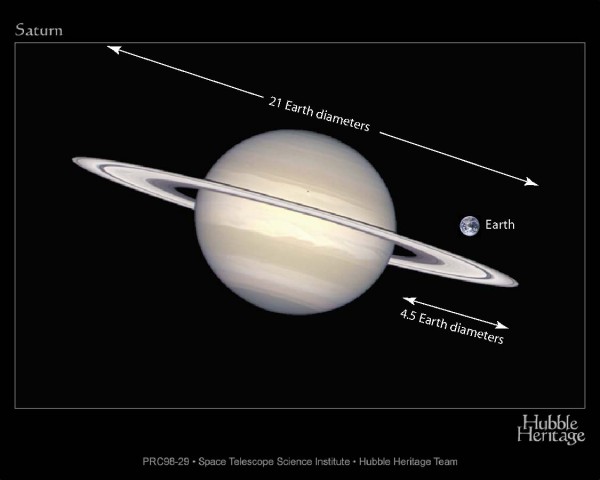

Saturn yearly changes
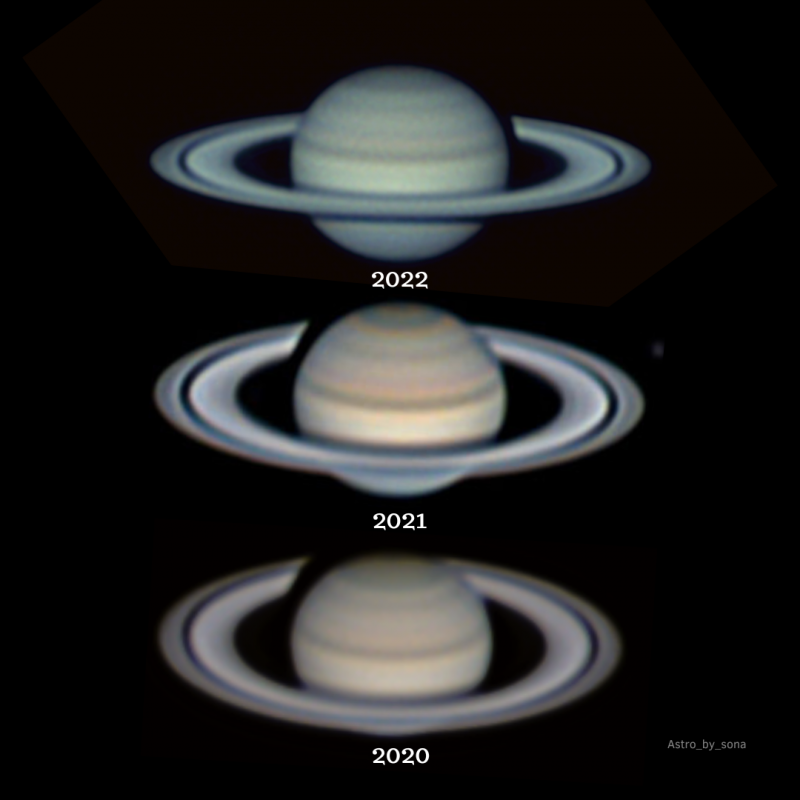
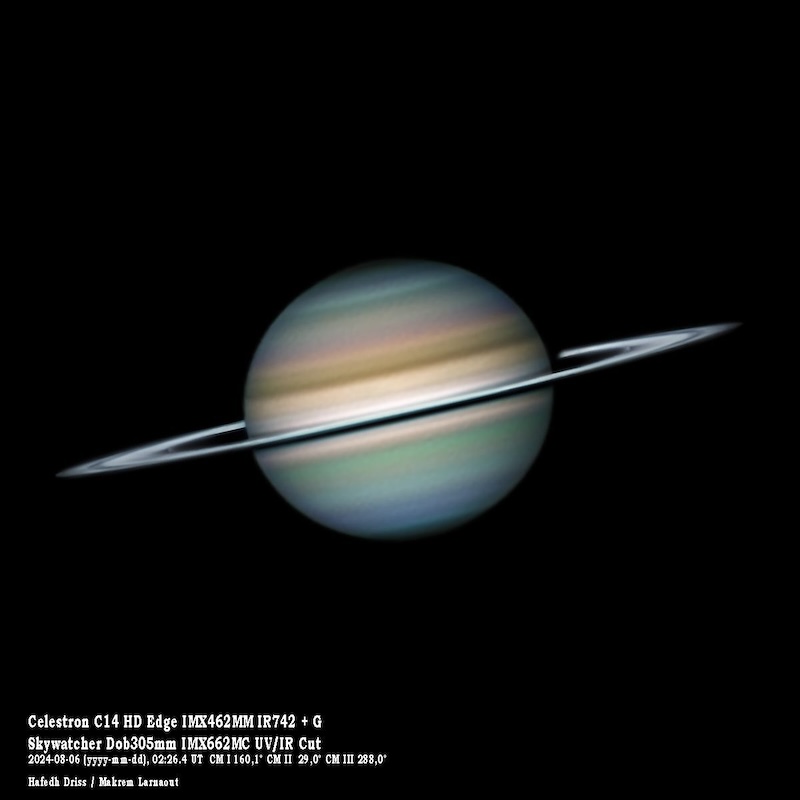
Bottom line: Saturn’s 2024 opposition comes on September 8, when Earth will sweep between the sun and Saturn, placing the ringed planet opposite the sun in our sky. Saturn will be in an excellent place to observe from late August through early October.
Read more: What does opposition mean for an outer planet?
Enjoying EarthSky so far? Sign up for our free daily newsletter today!
A planisphere is virtually indispensable for beginning stargazers. Order your EarthSky planisphere today.
[ad_2]
Source link

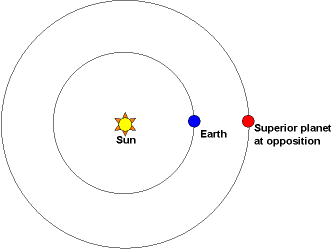
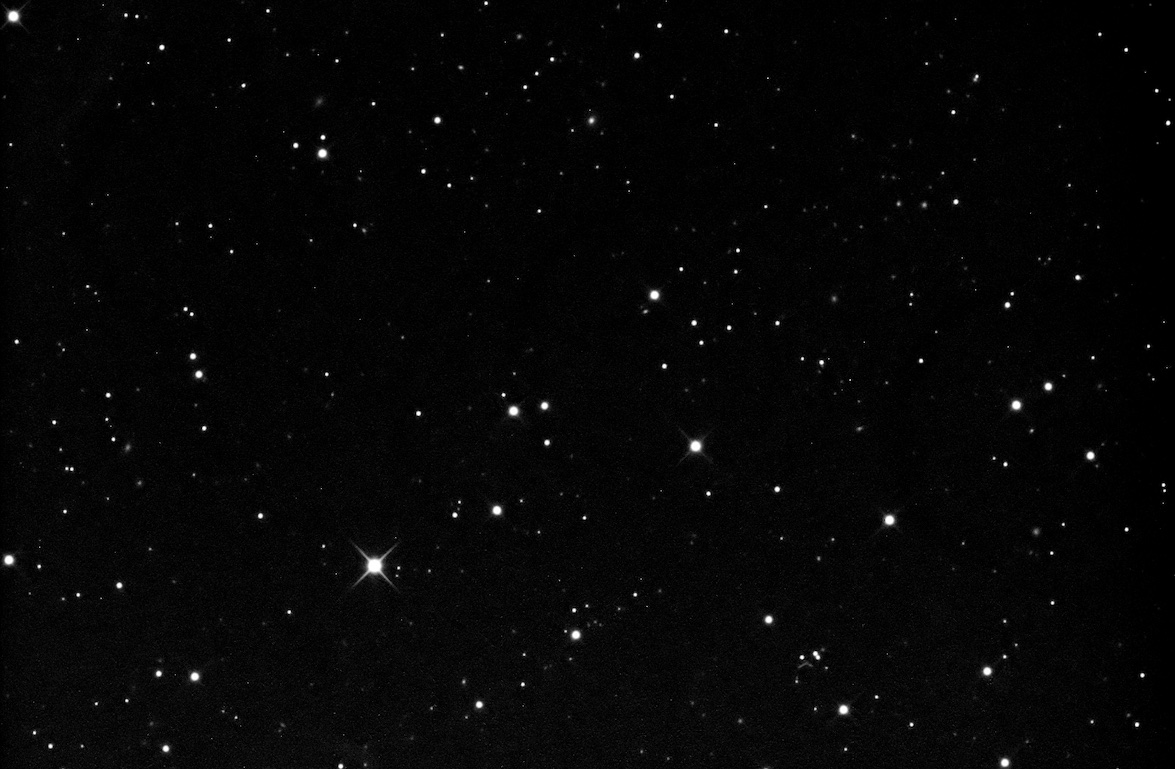


No comments! Be the first commenter?